I’m not sure what first inspired me to do this, but I have on occasion made a pesto pizza for a few decades now.
I never follow a recipe, and the following is the result of a long period of trial and error. There are a great many variations one could make to this recipe; however, if followed precisely, the result will be a thin-crust pizza that is comparatively healthier than your typical pie.
First, the flour. For the longest time, I used unbleached flour exclusively, though I am trying to incorporate more whole wheat flour into my cooking. The problem I have found with whole wheat flour is it has a slightly bitter taste and it tends to stick like glue to my pizza baking tray.
To overcome the first problem, my mix has become half of the one kind of flour and half the other. That also helps to work around the second problem. Regardless, when using any amount of whole wheat flour, one should prep the baking tray by lightly coating with flour.
Next, the yeast. I use fast-rise pizza yeast, though any type would likely suffice. I empty the contents of a packet into a Pyrex bowl, add a cup of luke-warm water and wait five minutes. As a general rule, the hotter the water, combined with the longer you wait, will make for a thicker crust. Since I always make a thin-crust pizza, I can’t provide any detail for how exactly to prepare a thicker crust.
You might as well preheat the oven to 400 degrees at this point. After five minutes have elapsed, add to the water:
- 1 tsp of olive oil
- 1 tsp each of garlic, onion powder and oregano
I mix these into the water before adding any flour, so the seasonings will be evenly distributed throughout the crust (hopefully). Add to this one cup each of unbleached and whole wheat flour. Stir thoroughly.
Now, this mixture will be too wet and sticky to flatten out, so use your hands to massage into the dough alternating palmfuls of the two types of flour. You are ready to flatten it out with a rolling pin once it stops sticking to your hands. That said, you may need to work in more flour as you use the pin. If dough sticks to it, you need more flour.
At any point in the preparation of the dough, you can also prepare the pesto sauce. As somebody without any standards, I have always been content with those Knorr sauce packets you can find in any grocery. Just follow the instructions on the packet. Keep in mind you want this to thicken some, but still be fluid enough to cover the entire surface of the dough.
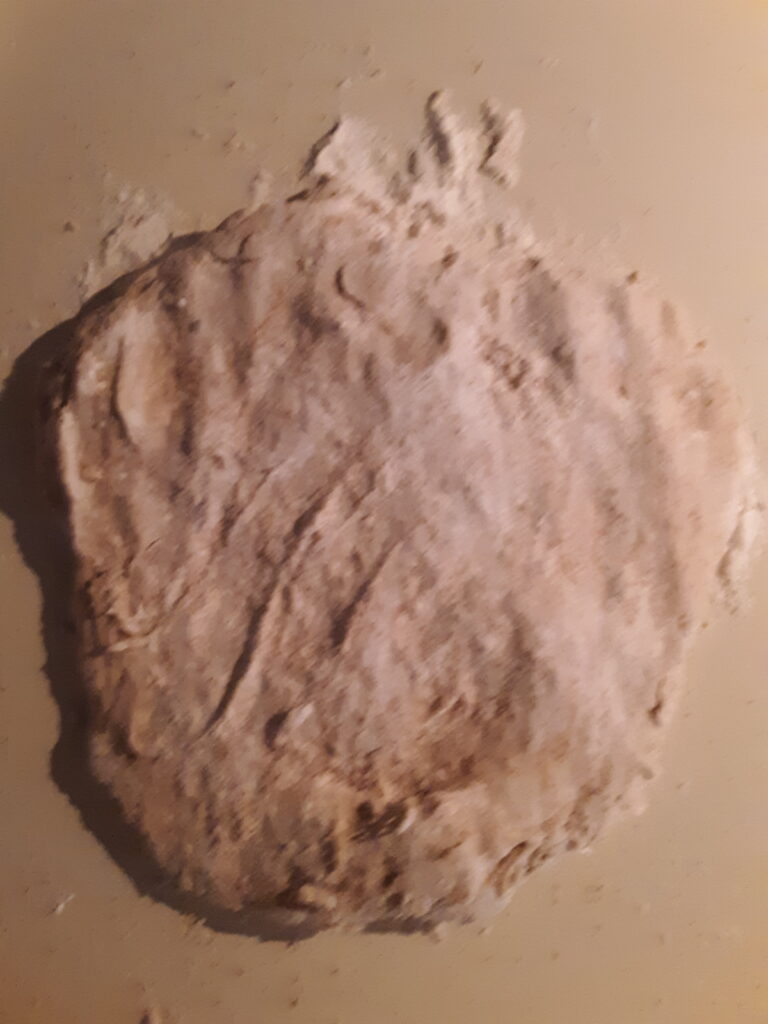
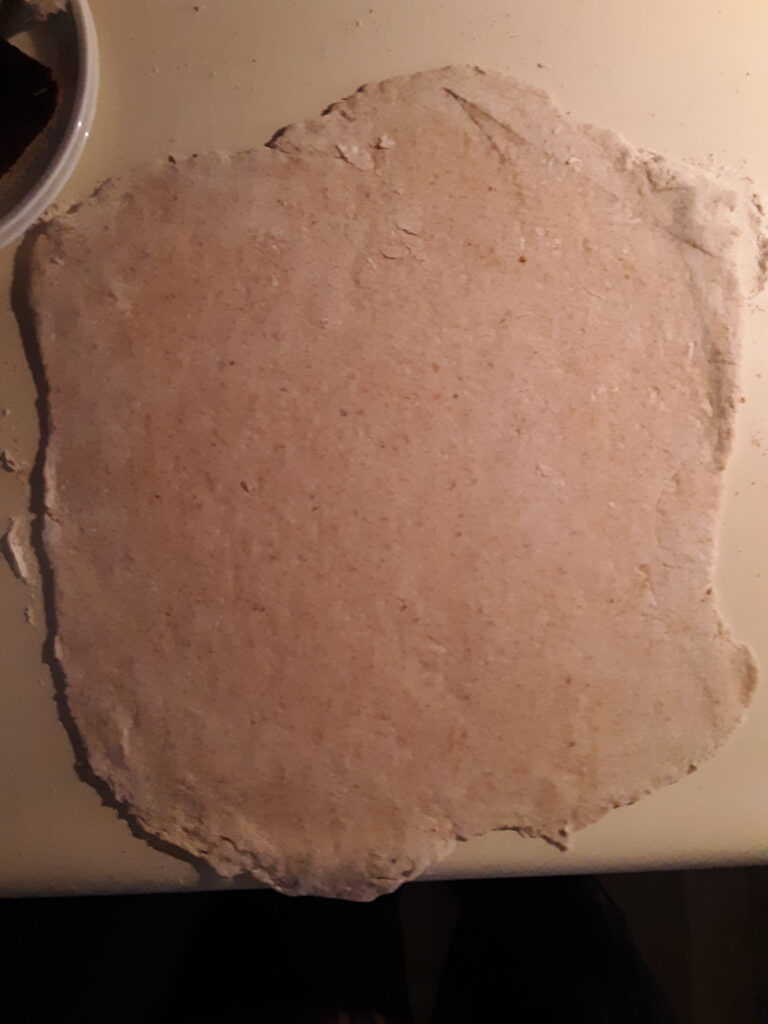
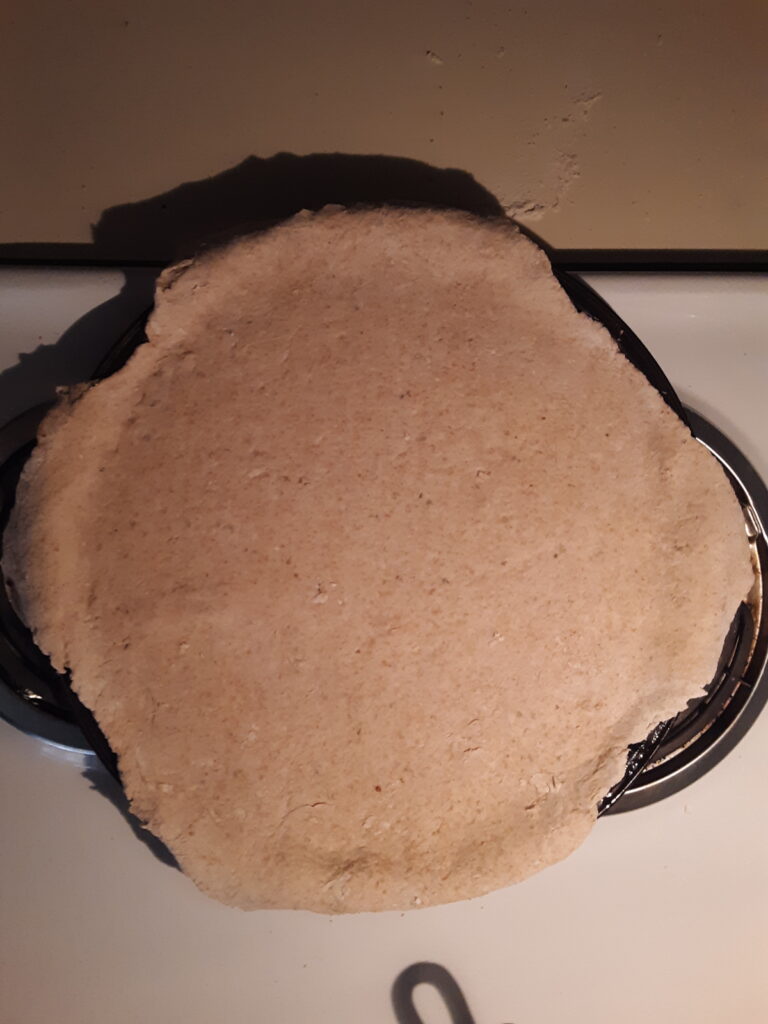

Once you have bludgeoned the dough into a flat surface that is wide enough to fully cover the pan, transfer it to your baking tray. Use a pizza cutter to trim any excess.
When the pesto sauce is at the right consistency, spoon it onto the dough and spread it out evenly. At this point, we will bake the pizza as it is for ten minutes.
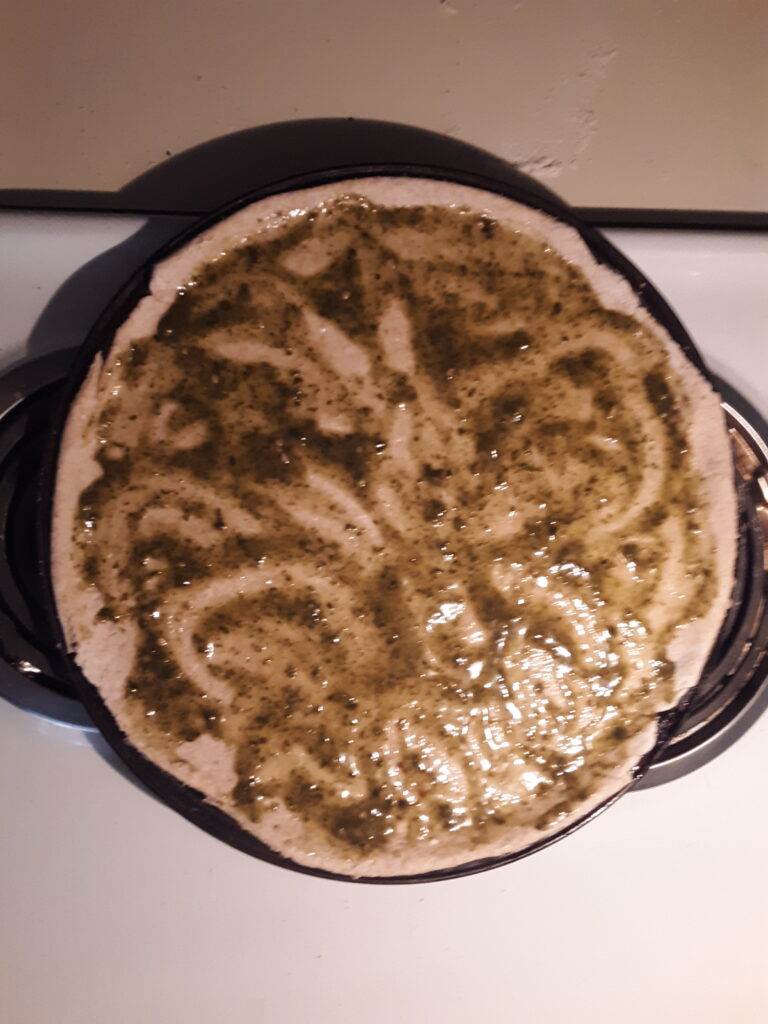
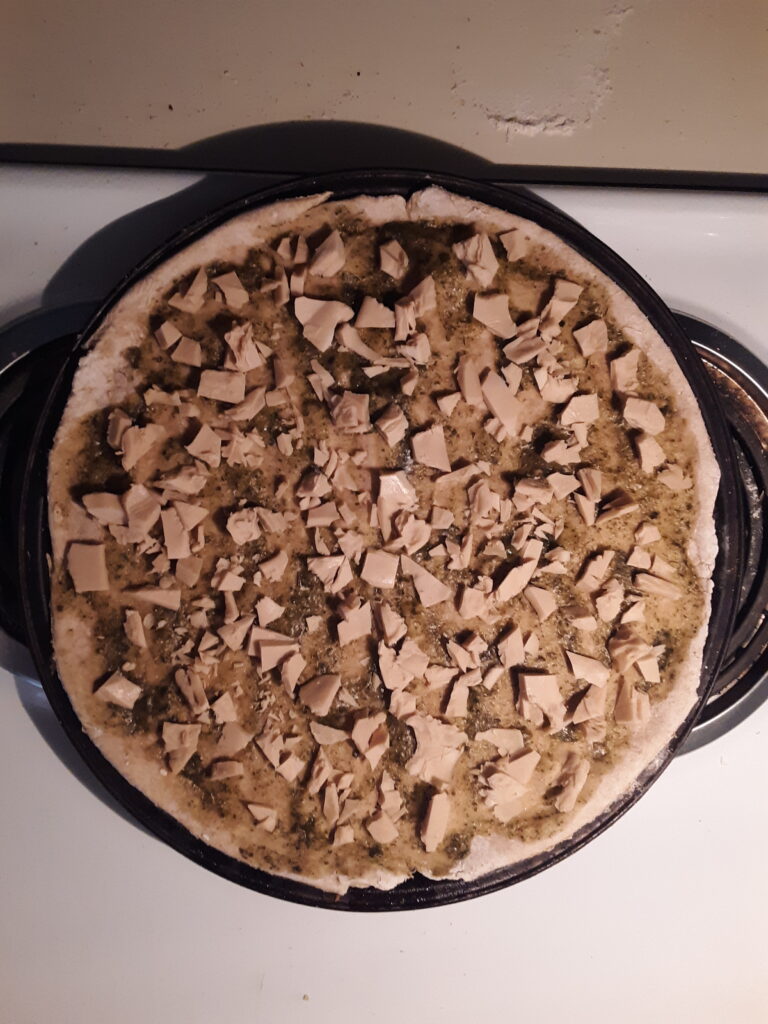
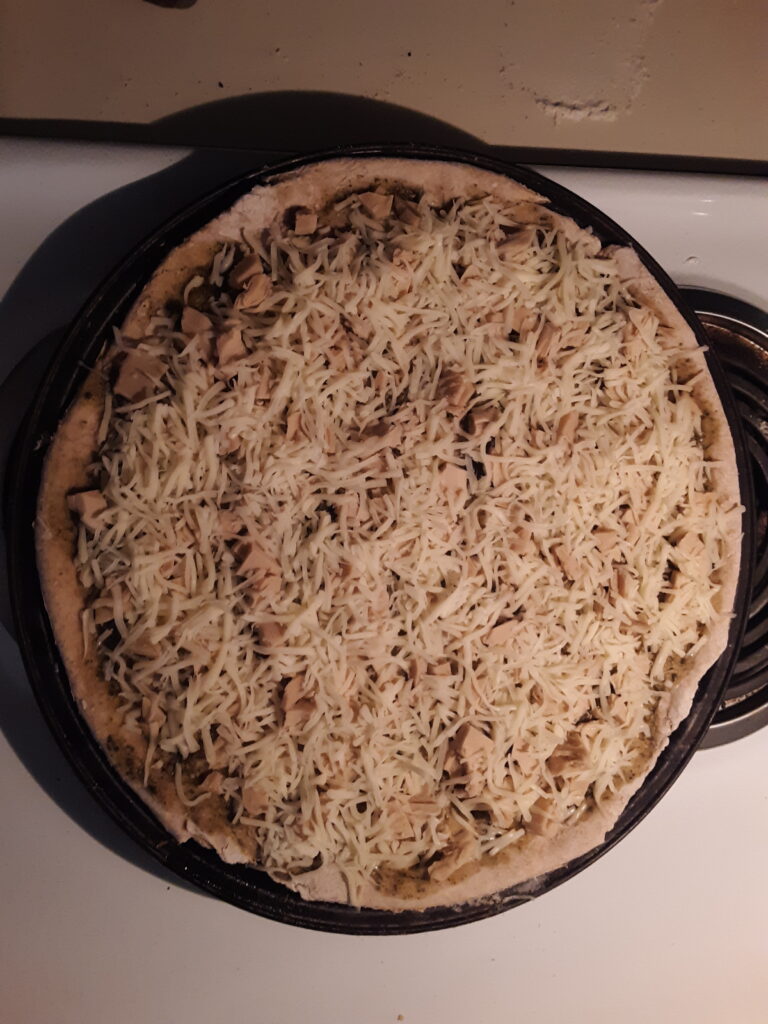
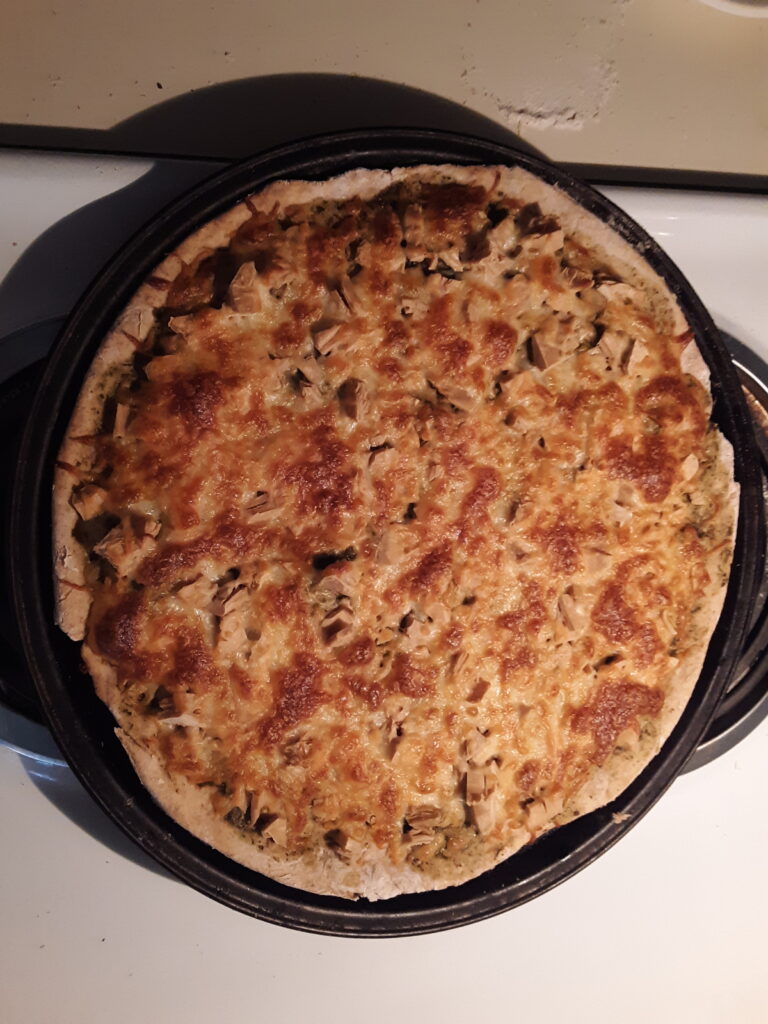
After ten minutes, apply any toppings you want. My picture shows diced Sweet Earth brand artificial “chicken”. Cover the toppings with cheese and bake for ten more minutes.
